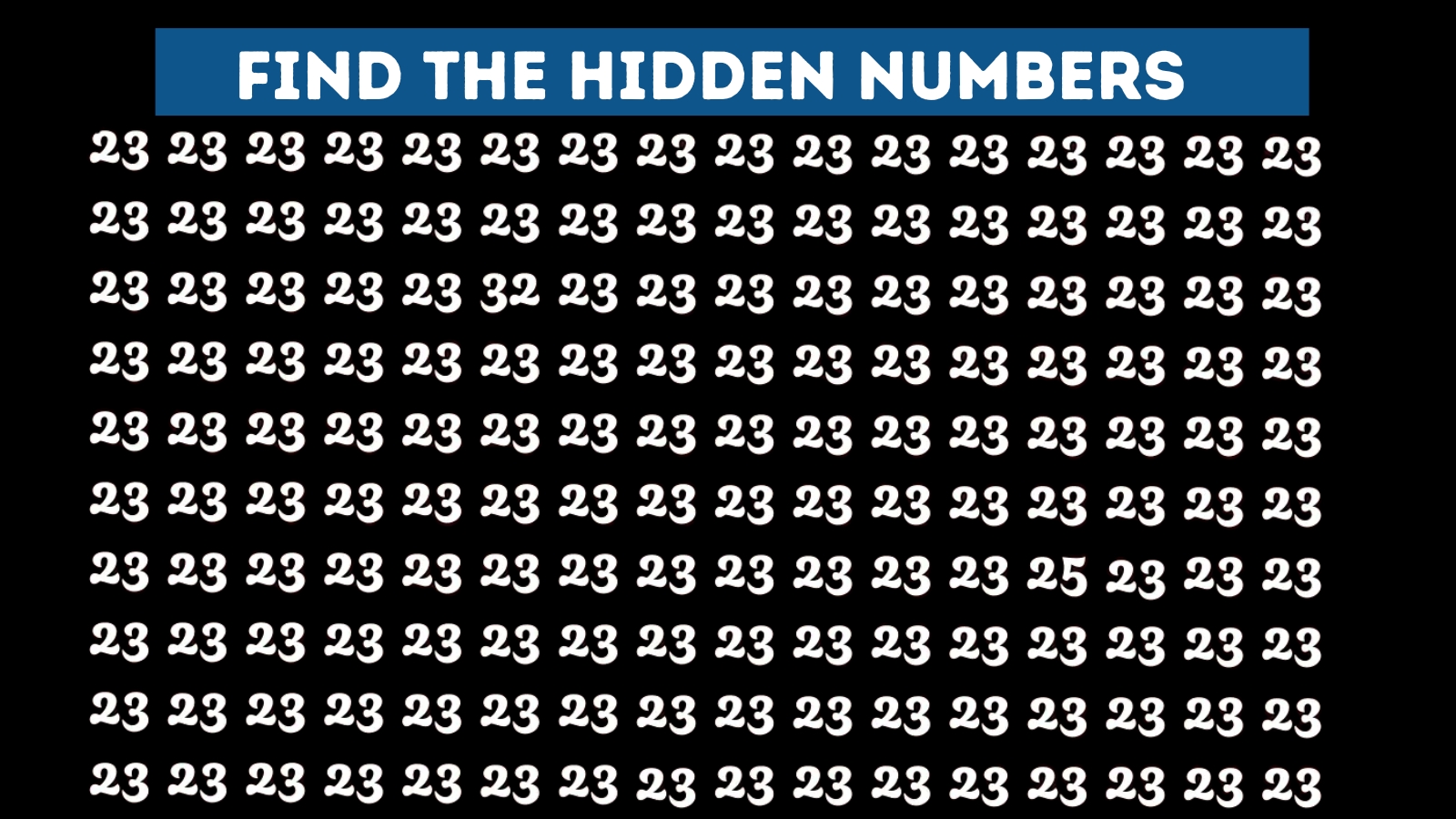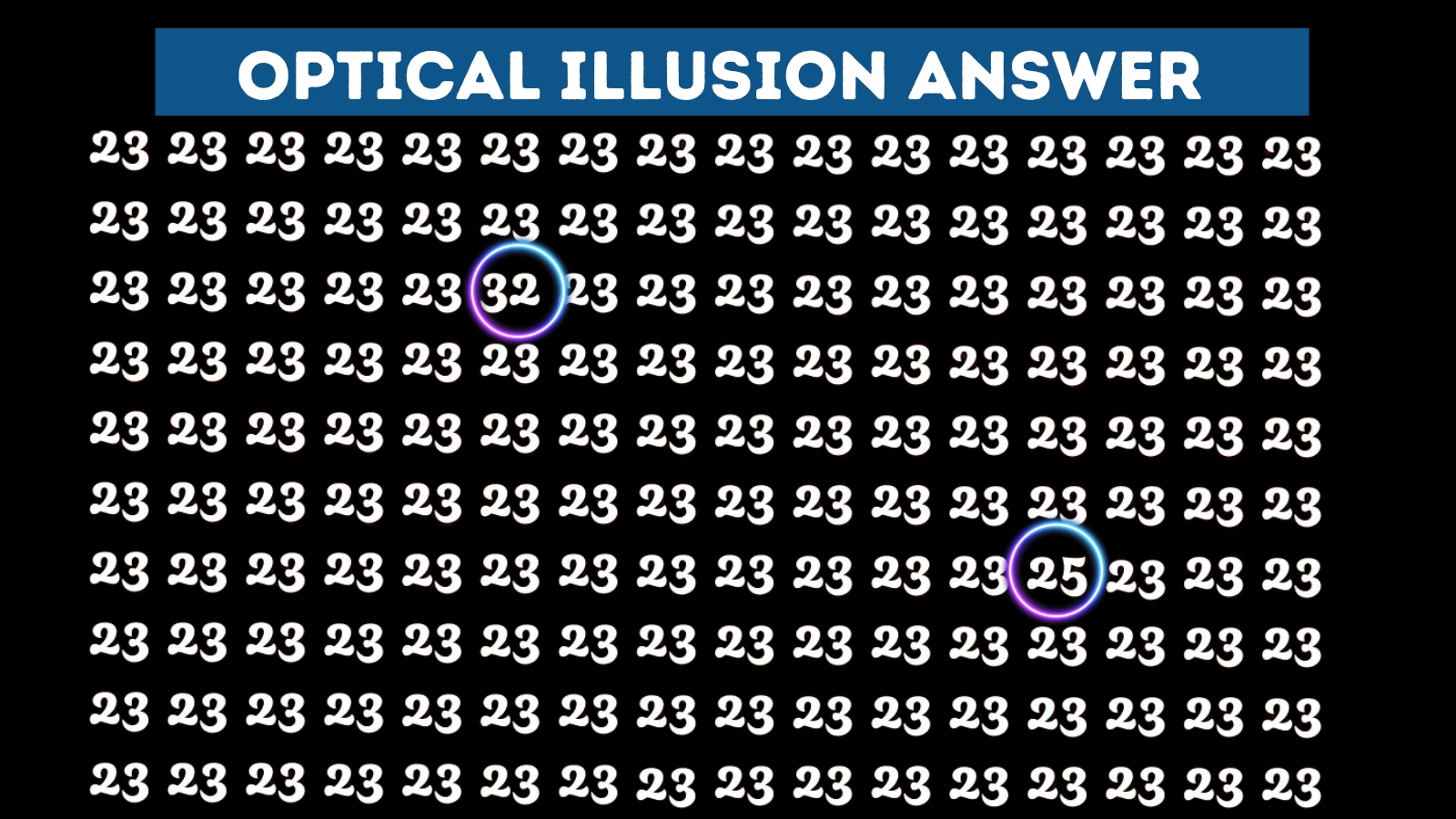A deceptively simple optical illusion is currently making the rounds on social media, leaving thousands of puzzle enthusiasts scratching their heads in frustration. The challenge seems straightforward enough: locate the numbers 25 and 32 hidden among a sea of 23s, and do it all within five seconds. What sounds easy on paper has proven to be anything but, with the majority of participants admitting defeat before the timer runs out.
The Psychology Behind the Challenge

Optical illusions like this one exploit fundamental quirks in how our brains process visual information. When we’re presented with repetitive patterns, our minds naturally want to group similar elements together, making it incredibly difficult to spot subtle variations. The numbers 2, 3, and 5 share similar curves and lines, which means our visual cortex has to work overtime to distinguish between them when they’re clustered together in a grid format.
Dr. Sarah Mitchell, a cognitive psychologist from Melbourne University, explains that these types of puzzles tap into our pattern recognition systems. “Our brains are wired for efficiency, not accuracy,” she notes. “When we see repeated patterns, we tend to gloss over details rather than examine every element individually. That’s why finding those hidden numbers becomes such a formidable task.”
Why This Puzzle Is Going Viral
The challenge has gained massive traction on platforms like Facebook, Instagram, and TikTok, with users sharing their attempts and times. Part of its appeal lies in its accessibility—anyone can try it, regardless of age or educational background. There’s also a competitive element at play, with friends and family members challenging each other to beat personal records or prove who has the sharper eye.
Content creator Jamie Richardson, who shared the puzzle to her 200,000 followers last week, says the response has been overwhelming. “People are getting genuinely competitive about this,” she laughs. “I’ve had hundreds of comments from people saying they can’t find the numbers, and just as many claiming they spotted them instantly. It’s become this weird dividing line in my comment section.”
The Five-Second Time Limit
The arbitrary five-second deadline adds an extra layer of pressure that transforms a moderately difficult visual task into a near-impossible race against time. While some eagle-eyed individuals claim to have conquered the challenge within the allotted timeframe, experts suggest that most people would need at least 10 to 15 seconds of focused searching to reliably identify both hidden numbers.
Time pressure fundamentally changes how we approach problem-solving. Under stress, our brains default to faster, less thorough processing methods, which is precisely what makes this challenge so tricky. The five-second limit essentially forces participants to rely on luck and intuition rather than systematic searching.
Tips from Visual Puzzle Experts
Professional puzzle designers offer a few strategies for tackling these types of challenges. Rather than scanning randomly, they recommend dividing the image into quadrants and systematically searching each section. Another technique involves slightly unfocusing your eyes, which can sometimes make irregularities in patterns more apparent. Some participants also report success by looking for the numbers in their peripheral vision rather than staring directly at the grid.
Interestingly, taking a step back from your screen can also help. Distance changes the way our eyes perceive details and can sometimes make outliers more obvious. Of course, all these techniques require more than five seconds to implement effectively, which brings us back to why so few people actually succeed within the time limit.
The Social Media Phenomenon
What makes these challenges particularly engaging is their shareability. Unlike complex riddles or mathematical problems that require explanation, optical illusions are inherently visual and immediate. People can screenshot their attempts, share them with friends, and instantly participate in a communal experience. The comment sections on these posts often become mini-communities where people swap strategies, express frustration, or boast about their success.
The competitive aspect can’t be understated either. In an age where screen time is often criticized, these brief mental challenges offer a moment of focused engagement that feels productive. Successfully solving them provides a small dopamine hit and bragging rights—a combination that keeps people coming back for more.
Answer Revealed: Where Are 25 and 32?

For those still searching or ready to admit defeat, here’s where the elusive numbers are hiding. The number 25 can be found in the upper-right quadrant of the grid, approximately three rows from the top. The number 32 is located in the lower-left section, roughly five rows from the bottom. Both numbers are deliberately positioned in areas where the repetitive pattern of 23s is densest, making them exceptionally difficult to spot without careful scrutiny.










